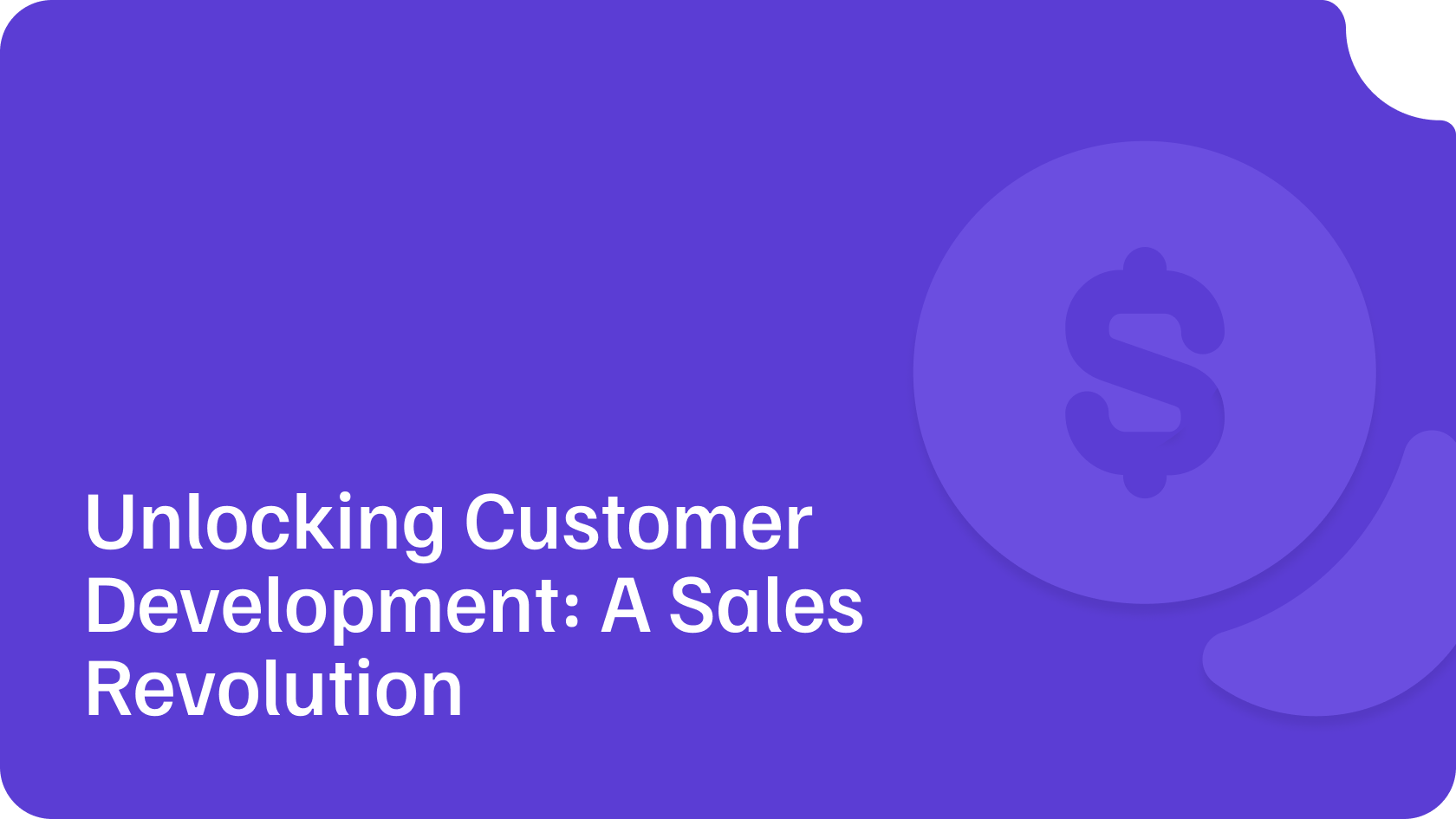How well does a company understand its customers? This question is pivotal in the fast-paced world of business, where success often hinges on this very understanding. Enter Customer Development—a strategic approach that has not only revolutionized the way businesses build products but also significantly influenced how they make sales. This blog post, rooted in the principles of "The Mom Test", aims to dissect the essence of Customer Development and explore its pivotal role in the realm of sales.
What is Customer Development?
Customer Development is not just a buzzword; it's a methodology that places customer feedback and validation at the forefront of product and business development. In essence, it's about learning from your customers before, during, and after you bring a product or service to market. The goal? To avoid the pitfalls of assumption-driven decision-making and instead rely on real-world insights directly from the people who matter the most—the customers.
The Mom Test principles in Customer Development
To truly grasp Customer Development, one must delve into the principles laid out in "The Mom Test." Authored by Rob Fitzpatrick, the book serves as a practical guide for entrepreneurs and product developers seeking unfiltered feedback. Let's distill these principles into actionable insights that directly impact the sales landscape.
1. Talking to customers effectively
"The Mom Test" advocates for conversations that reveal genuine insights rather than false positives. In the context of sales, effective communication is key. Instead of relying on leading questions that may steer customers towards positive responses, adopt a more neutral approach. Ask open-ended questions to uncover pain points, needs, and desires, enabling a more nuanced understanding of your customer's perspective.

2. Avoiding fluffy feedback
Customers may offer positive feedback to spare your feelings, but in Customer Development, the truth is paramount. Apply this principle to sales by seeking concrete details about the value your product or service brings. Don't settle for vague affirmations; dig deeper to understand the specific aspects that resonate with your customers and drive their purchasing decisions.

3. Interpreting feedback wisely
In the sales arena, customer feedback is a goldmine for honing your approach. Fitzpatrick emphasizes the importance of interpreting feedback effectively. Translate this to sales by distinguishing between what customers say they want and what they truly need. By aligning your sales strategy with genuine customer needs, you position your product or service as a solution rather than a mere commodity.

4. Iterative learning in sales
Customer Development is a continuous, iterative process, and so should be your approach to sales. Embrace the idea that your initial sales pitch may not be perfect, and be open to refining it based on customer interactions. This principle echoes the agile nature of Customer Development, where adaptability and responsiveness to customer insights drive success.

The symbiotic relationship: Customer Development and sales
So, how does Customer Development relate to sales? In essence, they are intertwined, forming a symbiotic relationship that propels a business forward. By integrating Customer Development principles into your sales strategy, you not only enhance the quality of your interactions with potential customers but also refine your offerings to meet their genuine needs.
Let's dive into two scenarios to illustrate how Customer Development principles from "The Mom Test" directly impact sales strategies
Scenario 1: Refining Your Sales Pitch
Imagine you've just launched a new software product designed to streamline project management for small businesses. In your initial sales pitch, you emphasize the comprehensive features and advanced analytics. However, after engaging in Customer Development conversations, you discover that your target customers, mainly small business owners, are more concerned about simplicity and user-friendliness than intricate features.
Armed with this insight, you adapt your sales pitch to highlight the software's intuitive interface and emphasize how it seamlessly integrates into their existing workflow.
By aligning your message with the genuine needs uncovered through Customer Development, you establish a more compelling narrative that resonates with your audience. This iterative process not only refines your sales approach but also positions your product as a solution that directly addresses the pain points of your customers.
Scenario 2: Uncovering hidden pain points
Suppose you run a company that provides digital marketing services to e-commerce businesses. In your initial client interviews, you may receive positive feedback about the effectiveness of your social media campaigns. However, applying the principles of "The Mom Test," you dig deeper to uncover hidden pain points.
Through thoughtful questioning, you discover that while your clients appreciate the increased visibility on social media, what truly keeps them awake at night is the uncertainty about the return on investment (ROI) from their marketing efforts.
Armed with this crucial insight, your sales strategy shifts. Now, instead of solely promoting the visibility aspect, you emphasize the robust analytics and detailed reporting your service provides, showcasing the tangible ROI your clients can expect. This nuanced approach not only addresses a critical customer concern but also positions your company as a strategic partner invested in the success of your clients.
Summing up thoughts
In conclusion, Customer Development is not just a theoretical concept—it's a game-changer in the dynamic world of sales. By heeding the principles and adopting a customer-centric mindset, businesses can cultivate meaningful relationships with customers, refine their offerings, and ultimately drive sales success.
Remember, in the realm of Customer Development, the customer's voice is not just heard; it's the driving force behind every strategic decision.








